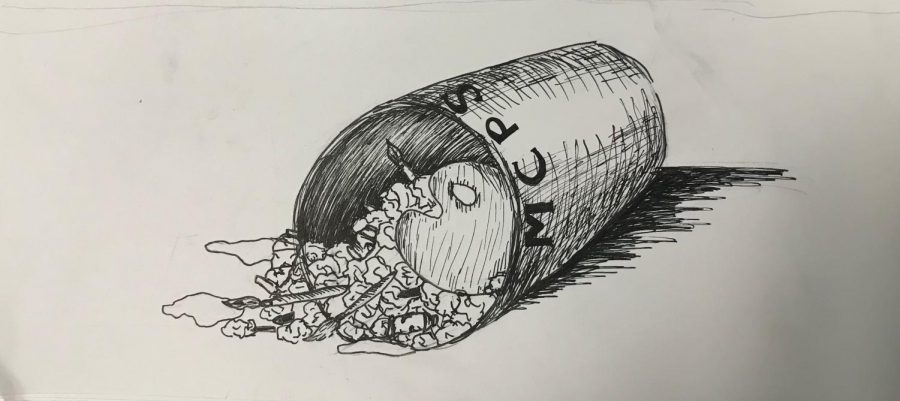Emphasis on STEM hinders creativity
March 7, 2019
WCHS offers a variety of interesting and creative electives. However, despite these courses catering to almost every interest, not many WCHS students decide to enroll in them.
The highly-competitive environment at WCHS causes students to believe that only core curriculum classes are important, and electives have no other purpose than to fulfill credits. Students who have a passion in an area that strays from the STEM sphere are discouraged from taking electives that parallel their interests because of the stigma against taking unconventional, more creative classes.
According to a 2015 Washington Post article, innovation does not just depend on teaching the basics; it is necessary to allow students to explore their passions and experiment.
Whether it be through parents, society or school, there is a lot of pressure for students to go into STEM. Though some believe that having a job in STEM guarantees success and therefore happiness, this is not the case when STEM is not something that you’re passionate about. STEM is seen as a more secure job whereas going into the arts is seen as more risky, but that should not stop people from pursuing a career they are passionate about.
According to a 2016 Odyssey article, the spotlight on STEM and its portrayal as the one correct answer takes away from the perceived importance of other careers.
WCHS is a challenging and competitive school, and this creates an environment that emphasizes taking conventional and difficult classes in order to prove one’s intelligence. This discourages students from taking electives that are more artistic or not well-known because they could be perceived as lazy or not academically talented. However, students who take creative classes in school could be at an advantage.
According to a 2014 National Endowment for the Arts study, students who study art are four times more likely to be recognized for academic achievement.
The environment seen at WCHS has a strong focus on being accepted into prestigious colleges. Thus, students will take classes that they think we give them a higher chance of getting into a distinguished university. These courses are usually core curriculum classes and are honors or AP. Since most of the electives offered are either regular or honors, students tend to stray away from these courses because they think that they won’t help them get into college.
According to a 2012 National Endowment for the Arts study, art students were 29 percent more likely to apply to postsecondary education than were non-art students. So, taking creative or artistic classes actually encouraged the pursuit of higher education.
STEM is an important part of everyone’s daily life. With the developments in technology come the developments in other significant fields, such as medicine, economics and more. It is important to encourage students to go into this field as it benefits our society..
Despite the fact that STEM is important, we should not force students into believing that STEM is the only field that is acceptable for them to go into. Creativity and self-expression are equally as significant as STEM and should be seen as such. Society sees people who stray from the STEM path as less qualified or important compared to those in more conventional, scientific jobs and this creates a bad environment for students who want to pursue different passions.
WCHS is a competitive and prestigious school, but with these beneficial attributes comes an environment that uses academics to recognize worth. The discouragement of focusing on art in society has seeped its way into the WCHS environment, causing students to concentrate more on core curriculum classes than creative courses that they might have a true passion for. This type of thinking is harmful to one’s creativity and could be detrimental to society.


